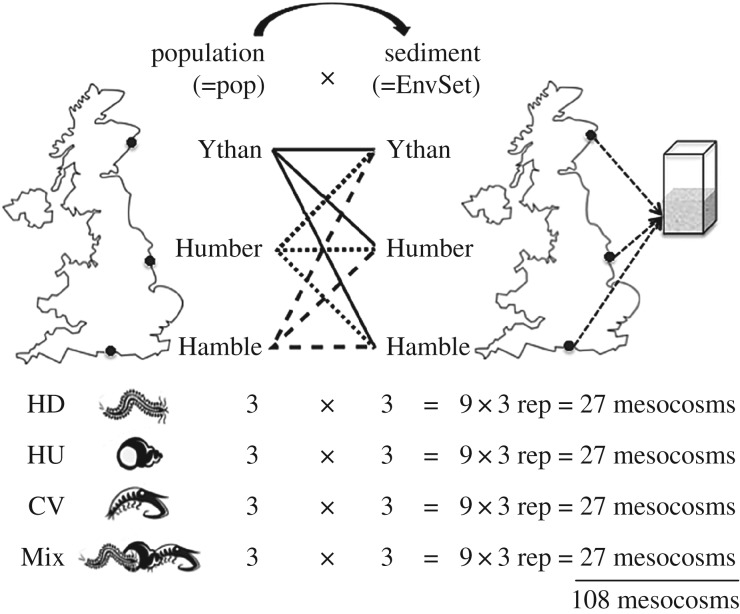Figure 1.
We adopted a full factorial experimental design consisting of three geographically distinct populations (Ythan, Humber, and Hamble estuaries) of invertebrate species (H. ulvae, HU; C. volutator, CV; H. diversicolor, HD) crossed with three environmental settings (sediment sourced from each geographical location). Species treatments included monocultures of each species (HD, HU, or CV) and a three-species mixture (Mix). Each treatment was replicated three times, giving a total of 108 aquaria. In addition, to distinguish the contribution of microbes and meiofauna from the activities of the macrofauna, we included additional aquaria that did not contain macrofauna (n = 9 environmental setting−1 = 27 aquaria) that were not included in statistical analyses.

